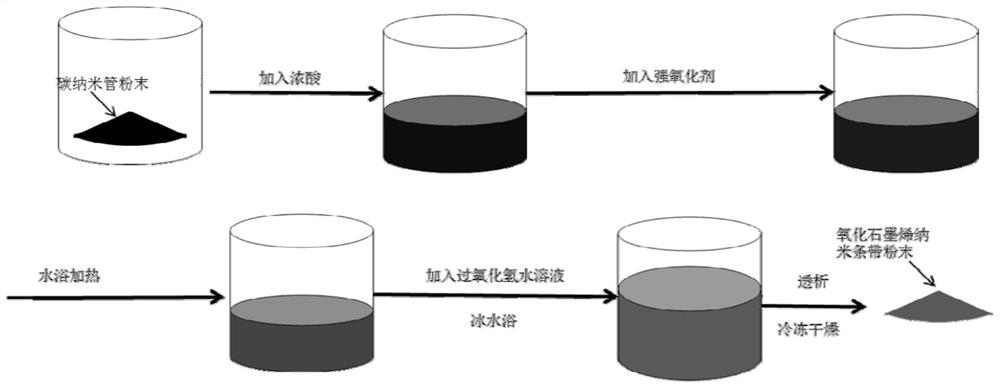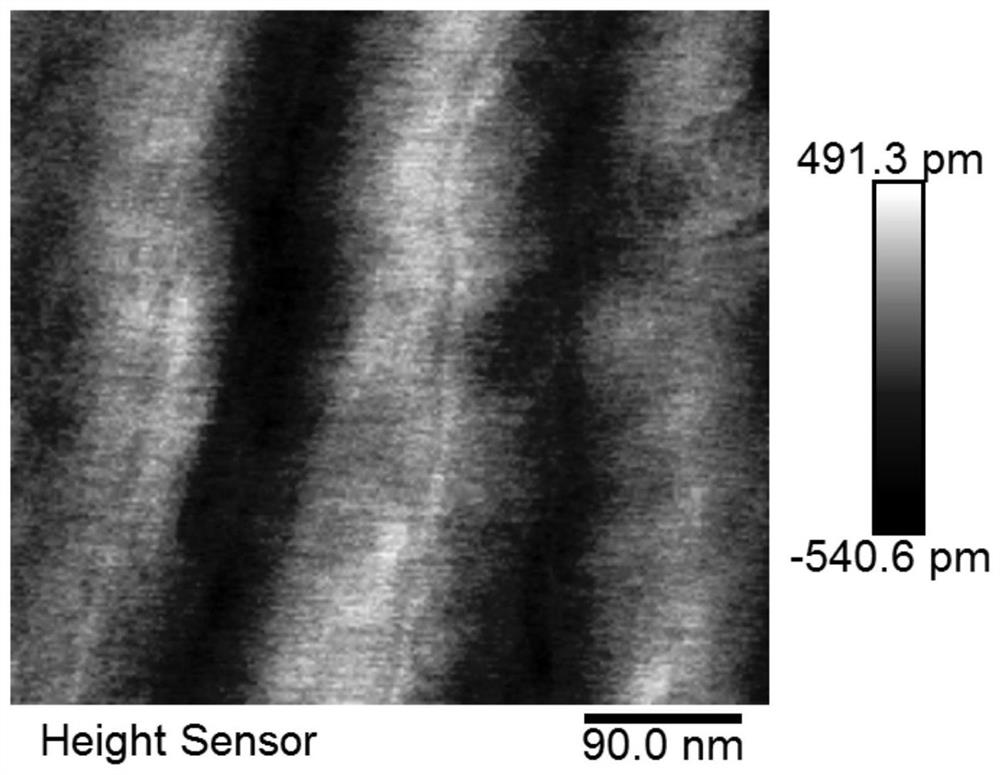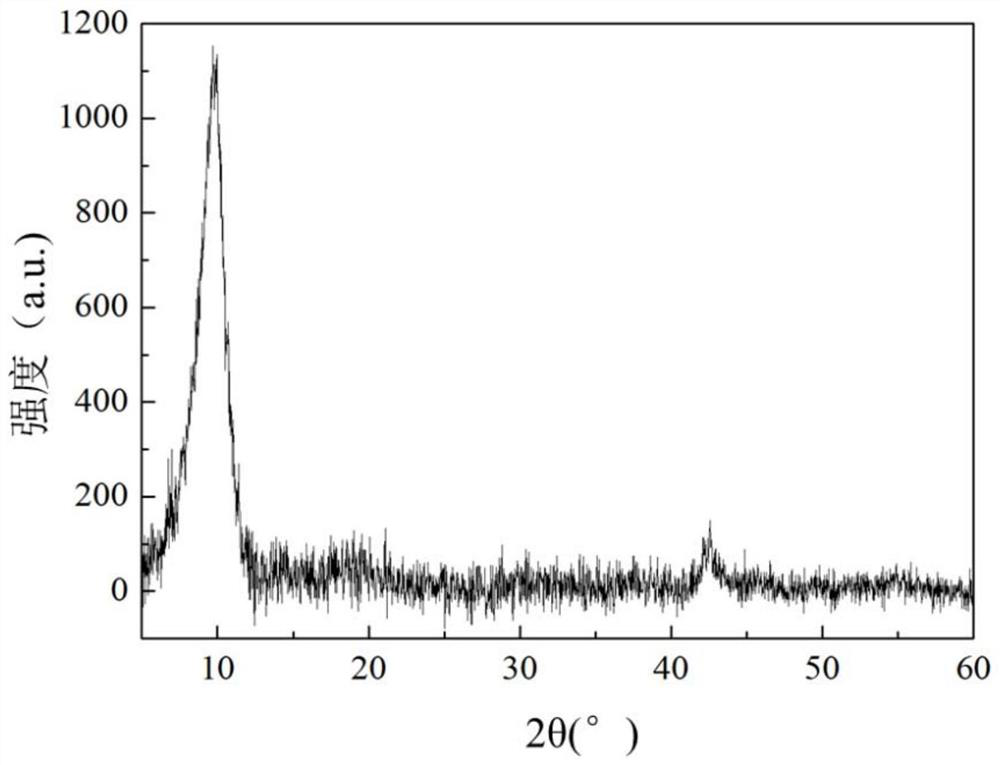A kind of graphene nanoribbon material and its preparation method and application
A nano-ribbon, graphene technology, applied in the direction of graphene nano-ribbon, graphene, nano-carbon, etc., can solve problems such as hindering lithium ion transmission, achieve lithium storage performance and lithium ion transmission rate improvement, increase specific surface area, The effect of high specific capacity
- Summary
- Abstract
- Description
- Claims
- Application Information
AI Technical Summary
Problems solved by technology
Method used
Image
Examples
preparation example Construction
[0034] As an aspect of the technical solution of the present invention, what it relates to is a kind of preparation method of graphene nanoribbon material, and it comprises:
[0035] The carbon nanotubes are oxidized and stripped longitudinally by the Hummers method to form a graphene oxide nanoribbon solution;
[0036] Directional freeze-drying is performed on the graphene oxide nano-ribbon solution to obtain a structured and ordered flocculent graphene oxide nano-ribbon material.
[0037] In some embodiments, the preparation method includes: reacting a mixed reaction system comprising carbon nanotubes, concentrated sulfuric acid, phosphoric acid, and an oxidizing agent at 60-80° C. for 1-3 hours to form a graphene oxide nanoribbon solution.
[0038] Further, the preparation method specifically includes: adding carbon nanotubes into concentrated sulfuric acid and stirring for 1-3 hours, and then sequentially adding phosphoric acid and an oxidizing agent to form the mixed reac...
Embodiment 1
[0067] The preparation technology of graphene nano strip material in the present embodiment comprises the steps:
[0068] 1) Add 1 g of multi-walled carbon nanotubes (5-20 μm in length and 45 nm in average diameter) into 250 mL of concentrated sulfuric acid solution, stir at room temperature for 2 h; add 28 mL of phosphoric acid solution dropwise at a constant speed within 30 min, and add 6 g of potassium permanganate at 2 g / Add the mixed solution at a speed of h, and stir at room temperature for 1 hour; heat to 70°C and stir for 2 hours, then cool to room temperature naturally; slowly pour the mixed solution into 400 mL of 0.73% hydrogen peroxide solution in an ice-water bath, overnight; use 5 wt % hydrochloric acid solution for centrifugal washing and dialysis for 10 days.
[0069] 2) Sonicate the graphene oxide nanostrip solution obtained after dialysis for 1 hour, quickly immerse the 50mL needle tube with the built-in graphene oxide nanostrip solution in liquid nitrogen a...
Embodiment 2
[0072] The preparation technology of graphene nano strip material in the present embodiment comprises the steps:
[0073] 1) Add 1 g of multi-walled carbon nanotubes (5-20 μm in length and 45 nm in average diameter) into 250 mL of concentrated sulfuric acid solution, stir at room temperature for 2 h; add 28 mL of phosphoric acid solution dropwise at a constant speed within 30 min, and add 6 g of potassium permanganate at 2 g / Add the mixed solution at a speed of h, and stir at room temperature for 1 hour; heat to 70°C and stir for 2 hours, then cool to room temperature naturally; slowly pour the mixed solution into 400 mL of 0.73% hydrogen peroxide solution in an ice-water bath, overnight; use 5 wt % hydrochloric acid solution for centrifugal washing and dialysis for 10 days.
[0074] 2) Sonicate the graphene oxide nanostrip solution obtained after dialysis for 1 hour, and slowly immerse the 50mL needle tube with the built-in graphene oxide nanostrip solution in liquid nitroge...
PUM
| Property | Measurement | Unit |
|---|---|---|
| length | aaaaa | aaaaa |
| diameter | aaaaa | aaaaa |
| width | aaaaa | aaaaa |
Abstract
Description
Claims
Application Information
 Login to View More
Login to View More - R&D
- Intellectual Property
- Life Sciences
- Materials
- Tech Scout
- Unparalleled Data Quality
- Higher Quality Content
- 60% Fewer Hallucinations
Browse by: Latest US Patents, China's latest patents, Technical Efficacy Thesaurus, Application Domain, Technology Topic, Popular Technical Reports.
© 2025 PatSnap. All rights reserved.Legal|Privacy policy|Modern Slavery Act Transparency Statement|Sitemap|About US| Contact US: help@patsnap.com



